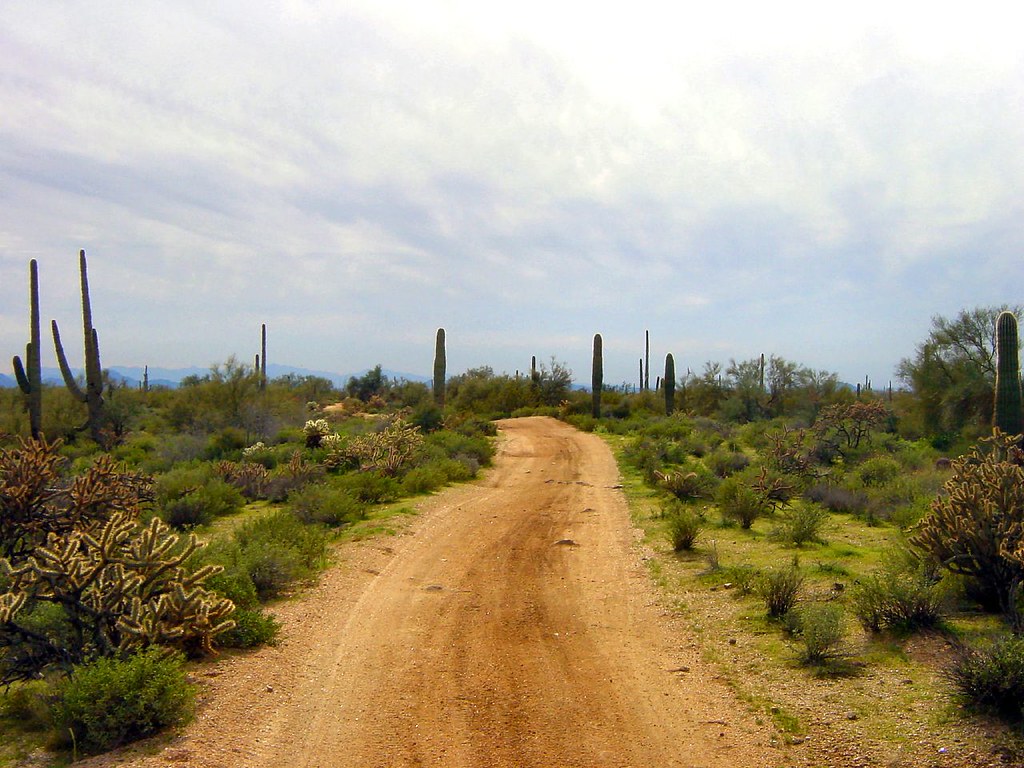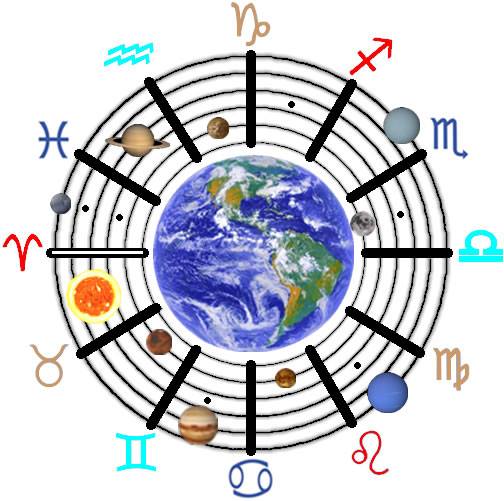I remember growing up in the ’80s, hearing the song “Aquarius” playing on the radio. As a child, the song already seemed old to me and only played on the oldie’s and classic rock stations. Knowing nothing about astrology, I assumed that the age of Aquarius had occurred before I was born. I actually thought that I’d missed it. I know that they stipulate the dawning of the Age of Aquarius, but how long could a dawn possibly last? I hadn’t even lived an entire decade yet; how could I understand the concept of the Great Ages? Even if we live to be a hundred years old, we may never fully grasp such a vast interval of time.
Precession of the Equinoxes
The Earth spins on its axis like a top spinning on the surface of a table. The planet wobbles as it rotates, tilting slightly in one direction. The North Pole is slowly moving backwards through the zodiac, taking almost 26,000 years to complete one cycle. We call this a great year, and from it, we derive the great ages, lasting approximately 2,160 years each. We can observe the rising degree on the Vernal equinox shifting about every 72 years. We know that we’re at the end of the Age of Pisces and the beginning of the Age of Aquarius. However, we can’t seem to agree on when one age ends and another begins, and it may not matter all that much.

The Cusp
When any planet changes signs, it mixes the energies of both signs. Each sign borders two other signs, and each cusp is unique. The Sun takes about ten days to transit a cusp, the slower-moving planets can take several months or even years. Those born as the Sun is changing signs have their natal Sun on a cusp. Think of cusps as border regions between countries, blending the cultures of both. It matters how close to the line we are and on which side. But the differences are subtle and gradual and may go unnoticed. We can expect a US citizen, for example, to have more in common with a Canadian citizen from the same border town than with a US citizen living near the Mexican border. In the same way, we can expect a Leo on the cusp of Cancer (♋ / ♌) to have more in common with a Cancer on the cusp of Leo, than they do with a Leo on the cusp of Virgo (♌ / ♍).

When we apply the cusp to the precession of the equinoxes, however, we can expect this period to last for hundreds of years. Like migrants crossing the desert in the night, we know we’re in the border region, but we’re not exactly sure where the line is. We may have already crossed into the Aquarian Age, or it may yet be a ways ahead of us. In the long run, it may not matter exactly where the line is. We’re crossing the border on our way to
the golden age, but we’re not there just yet. It may feel as though we’re stuck at the border waiting for a gateway to open. And as frustrating as that sounds, at least we’ve made it this far. We may be a bit early, but we know that the gate will open, and humanity will cross into the new age together.
The Great Shift
The natural progression of the zodiac moves from Aries ♈ to Taurus ♉, then Gemini ♊, Cancer ♋, Leo ♌, etc. This sequence gives each cusp a chronological quality, putting one sign before the other. Planets may retrograde back into a sign, but not before transiting the sign completely. With the precession of the equinoxes, however, this order is reversed, moving from Aries ♈ to Pisces ♓, then Aquarius ♒, Capricorn ♑, etc. The Age of Aries lasted from roughly 2150 BC to 10 AD, at which point the Age of Pisces began. This occurred in the midst of a 500-year cusp moving gradually from Aries to Pisces (♈ > ♓). We currently find ourselves amid a similar cusp moving from Pisces into Aquarius (♓ > ♒).
While Aquarius is usually preceded by Capricorn and followed by Pisces ( ♑ > ♒ > ♓), what does it mean to reverse this order? A cycle this vast cannot be easily observed, but it may be possible to make some predictions based on what we know of the cycle itself. Looking back over the last 2,000 years, we can see the signs of Pisces ♓ everywhere, both in religious and spiritual institutions and in the altered states of drug and alcohol consumption. While we have struggled to make sense of it all, reason seems to elude us. If you’ve felt like a rational soul in an irrational world, you’re not alone. But if you believe the world is rational, you may only succeed in generating endless rationale.
A Change is Gonna Come
We shouldn’t expect any drastic changes in our lifetimes, nor should we expect the problems of the Age of Pisces to be fully resolved. Instead, we can expect the irrational nature of our world to fade as a more rational worldview takes hold. During the Age of Pisces, every aspect of our world has been filtered through a fish-eye lens, giving us a somewhat distorted view. Though Pisces has profound potential for

compassion and spirituality, it’s also vulnerable to deception and delusion. In the Age of Aquarius, we can expect a more sober and fair worldview. Even our religious beliefs will be more rational and inclusive. Those institutions that have survived by secrecy, fear, and confusion will not stand for very long in the Aquarian Age.
Aquarius is associated with the revolutionary planet Uranus (♅) and opposed by Leo ♌, the sign of hierarchy and royalty. Aquarius desires a lateral power structure, equality across the board. We may not reach the proverbial promised land, but this is as close as we can get. We still currently live in a world that allows powerful monarchs to be above the law. A world that allows the wealthy to treat the planet like their private playground. Where the majority of souls look the other way as the climate situation worsens. And we may be reaching an ecological breaking point any day. But somehow, someday, a change is gonna come. The Aquarian Age will shake every institution to its very core.
Trigger Transits
In astrology, we’re constantly observing the transits of the planets through the signs and in aspect to one another. Some transits last for long intervals of time, spanning months or even years. When the combination of planets is beneficial, we may wish they could last forever. But we’re often dealing with long-term transits that are difficult or even dangerous. We cannot live in a constant state of suspense, worrying that something terrible might happen at any moment. No matter how difficult a long-term transit can be, we still live our lives with ups and downs. But when we have a long and challenging transit, we can look for short-term transits that may trigger a dangerous event.

If we have Pluto squaring our natal Mars (♇ □ ♂), for example, we may find ourselves in a dangerous situation for several years. We could be a soldier or a civilian in a war zone or just trapped in an abusive relationship. Though we may be aware of the potential for violence, we can’t say when or how it might manifest. During this period, we can follow the transits of Mars to find the specific dates when the danger is greatest. If we have a volatile Mars transit at some point during a dangerous Pluto transit, we can take greater caution when we need it most. In this way, Mars often acts as a trigger for the transits of the slower-moving planets. But is it possible to use Pluto as a trigger for an even longer interval of time?
Patience is a Virtue
The Aquarian Age has been a major focus of my astrological studies since I began in the early ’90s. I was learning the basics of astrology as Uranus entered Aquarius (♅ > ♒) and Pluto entered Sagittarius (♇ > ♐). I even made color-coded charts showing where the outer planets would be over the coming decades, and I couldn’t help but notice that Pluto would soon be in Aquarius ♒. By “soon,” I was thinking in terms of astrological signs and the fact that Pluto only had to transit Sagittarius ♐ and Capricorn ♑ before entering the sign of Aquarius. This, I thought, must be a significant turning point, possibly even the trigger that begins the Aquarian Age. But it would take about 30 years for Pluto to transit those two signs. So, I waited.

Three decades later, I’m still waiting for Pluto to enter Aquarius. And it will, first in early 2023. Then it retrogrades back into Capricorn a couple of times before remaining in Aquarius towards the end of 2024. As Pluto slows in its orbit, it takes about 20 years to transit Aquarius. These next two decades may be a long window of time but still a brief trigger in the precession of the equinoxes. I believe this period will see the most significant advancements from Piscean to Aquarian values. In the Aquarian Age Blog and Podcast series, we’ll
explore the transits of the planets to find more precise triggers for unfolding events. And we’ll look deep into the Aquarian Age, though we won’t live to see more than a glimpse of it in our lifetimes.
You Are Here
It may be challenging to fathom, but this shift is already underway. I can confidently say that when this decade is over, it will be unparalleled by any previous moment in history. We may have some idea what is about to unfold, but there will be more than a few surprises. This time will be viewed differently by different people all over the world, but we will come out the other side a more unified humanity. I cannot promise that everything will be OK, but I know that we’re collectively moving in the right direction. For those who have been fighting against the tides of corruption and injustice, you’ll soon find the tide moving with you. This is the dawning of the Age of Aquarius.
Click Here for a detailed Transit Timeline of outer-planetary events from 2020-2030.

